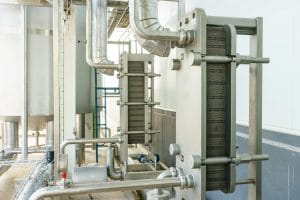 In addition to optimizing the science of thermal management, one of the greatest advantages that heat exchanger technology offers today’s industries is the ability to adapt to a wide variety of unique needs. For instance, many industries rely on thermal management for more than just cooling control panels, and many of those applications require the transfer or control of heat in areas much larger than an electrical enclosure. To address larger-scale thermal management needs, companies often rely on cold plate heat exchangers, which can apply the efficient and eco-friendly benefits of heat exchanger technology to an increasingly wider variety of applications.
In addition to optimizing the science of thermal management, one of the greatest advantages that heat exchanger technology offers today’s industries is the ability to adapt to a wide variety of unique needs. For instance, many industries rely on thermal management for more than just cooling control panels, and many of those applications require the transfer or control of heat in areas much larger than an electrical enclosure. To address larger-scale thermal management needs, companies often rely on cold plate heat exchangers, which can apply the efficient and eco-friendly benefits of heat exchanger technology to an increasingly wider variety of applications.
How Cold Plates Transfer Heat
The secret to many heat exchanger designs, including cold plates, is the fluid within the heat exchanger. In the case of cold plates, the fluid is directed through a series of flow paths that are machined into the plates. Through a combination of conduction and convection, the fluid absorbs the heat that is subjected to one side of the plates and then transferred to the other side where the heat can be dissipated. Cold plate heat exchangers can be designed to meet a wide range of high-performance thermal management needs, which makes them especially beneficial for an equally wide variety of industries and applications.
How Industries Benefit
The most common applications for plate heat exchangers are those that involve power output or thermal management requirements, such as food and beverage production or power production. For example, in food and beverage production, cold plate heat exchangers can help ensure consistent, uniform thermal management in process such as homogenization and pasteurization. Other industries, including power plant operations, can equally benefit from the high-performance capabilities of modern cold plate heat exchangers.
To learn more, call Noren Thermal, Inc. in Taylor, TX, at 866-936-6736.







